In this blog post, CHM director of research and access Ellen Keith highlights some of the house history resources in the Abakanowicz Research Center.
Are you a Chicago resident who’s curious about the history of your home? If so, come visit the Abakanowicz Research Center! Our librarians are happy to assist you in navigating the resources in our Building and House History Guide.
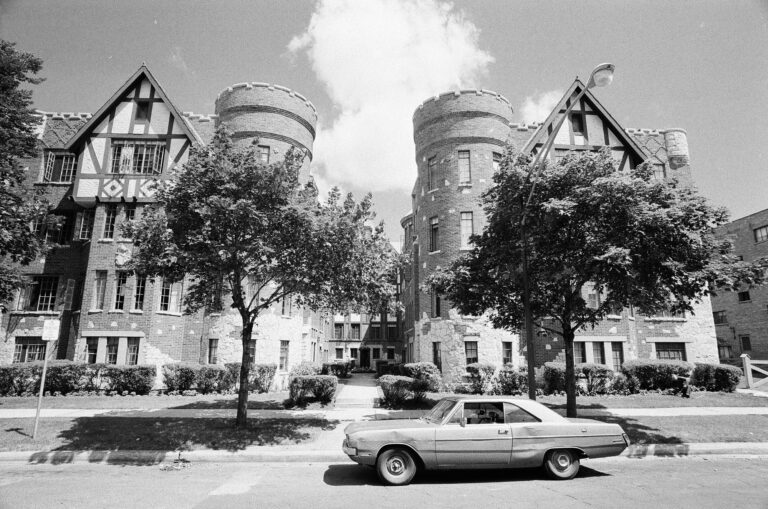
A castle-like apartment complex at 2556 West Fitch Avenue in the Rogers Park community area, Chicago, July 10, 1975. ST-90003352-0012, Chicago Sun-Times collection, CHM
Where to begin?
Let’s start with building permits. Often a house history researcher comes in wanting to confirm the date their home was built. We have building permits on microfilm from 1872 to 1954 (think the year after the 1871 Great Chicago Fire to the year before Richard J. Daley was elected mayor). Depending on the year the permit was filed, you can get varying amounts of information. Architects were included on permits after 1912. The University Library of the University of Illinois Chicago has digitized the microfilm.
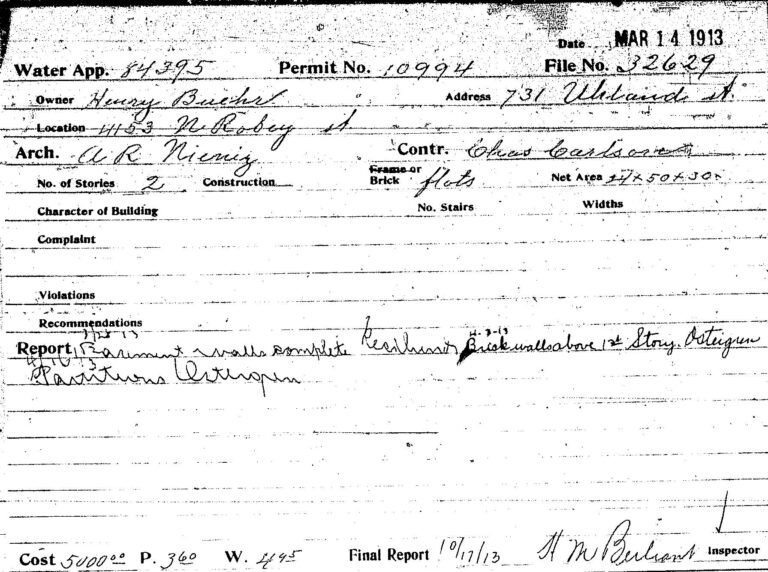
A building permit ledger entry for 4153 North Robey Street, which is now Damen Avenue, March 14, 1913.
Next, do we have a photograph of your home? We have a large collection of photographs arranged by subject, and the photographs of streets are among the most popular. If you’re interested in a specific area, the Sigmund J. Osty visual materials, approximately 1960–76, are organized by neighborhood.
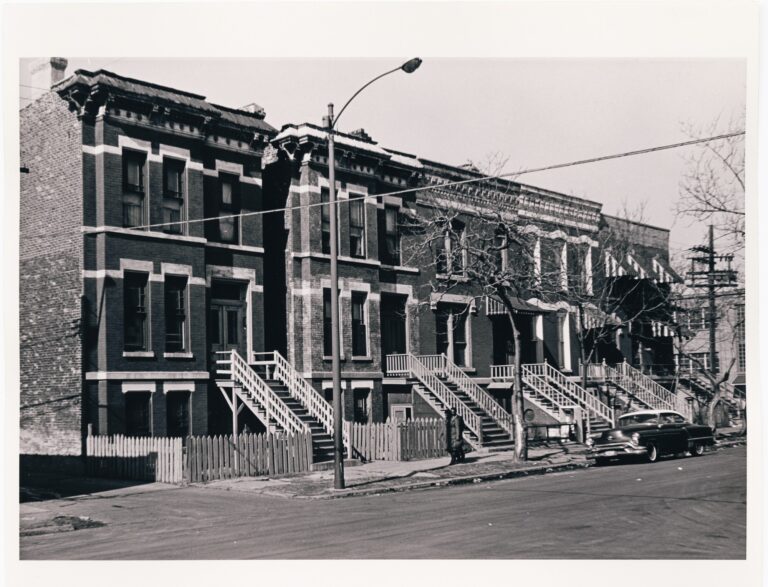
The 300 block of South Wolcott Avenue, Chicago, February 29, 1964. CHM, ICHi-074046; Sigmund J. Osty, photographer. These buildings do not appear to exist any longer, possible casualties of the Illinois Medical District.
If you’re interested in how your neighborhood has changed over time, a.k.a. the built environment, do we have a resource for you! Fire insurance maps are snapshots of a place in time. They were published to assess risk so the outlines of buildings are color coded with yellow for frame, pink for brick, and blue for stone. Buildings are also labeled with “S” for Store, “D” for Dwelling, and “F” for Flat. Our collection spans from the 19th to the later 20th century (1975 is the most recent). Each numbered volume covers a portion of the city and when there are multiple years for a volume, you can see your neighborhood change over time from a few buildings to a block early on and then in later years, blocks are filled in, and often what were single family homes (dwellings) are now flats (apartment buildings).
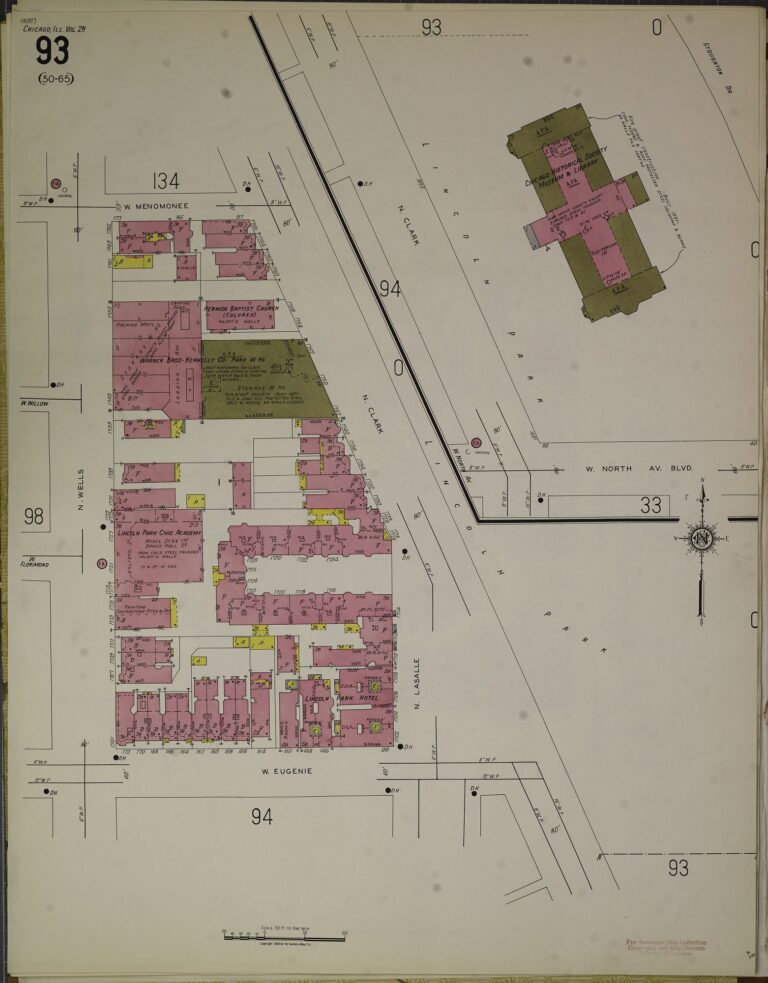
Sanborn Fire Insurance Map from Chicago, Cook County, Illinois. Sanborn Map Company, Vol. 2, North, 1935. Map. The Chicago History Museum (then the Chicago Historical Society) original 1932 building is in the top right corner.
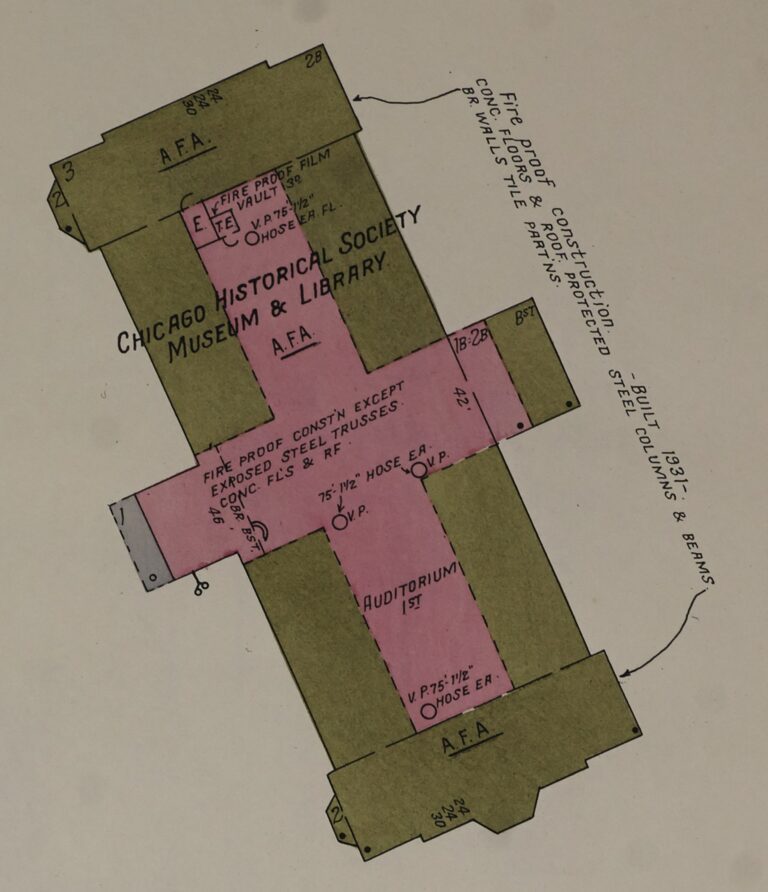
A close-up view of the “Chicago Historical Society Museum & Library,” which has “fire proof construction.”
Physical fire insurance maps are quite impressive. They’re very large and were expensive to reprint so when a volume was updated, corrections were pasted over the originals, which makes looking at them quite a tactile experience as pages get thicker and thicker with their corrections. If you’re not able to visit, however, there’s an excellent website, Guide to Chicago Sanborns volumes, that links to those freely available through the Library of Congress and the University of Illinois.
Please note that streets were renumbered in 1909 and street names changed continuously, so if you’re looking at a volume published prior to 1909, you’ll want to use our address conversion guide to determine the old address of your home.
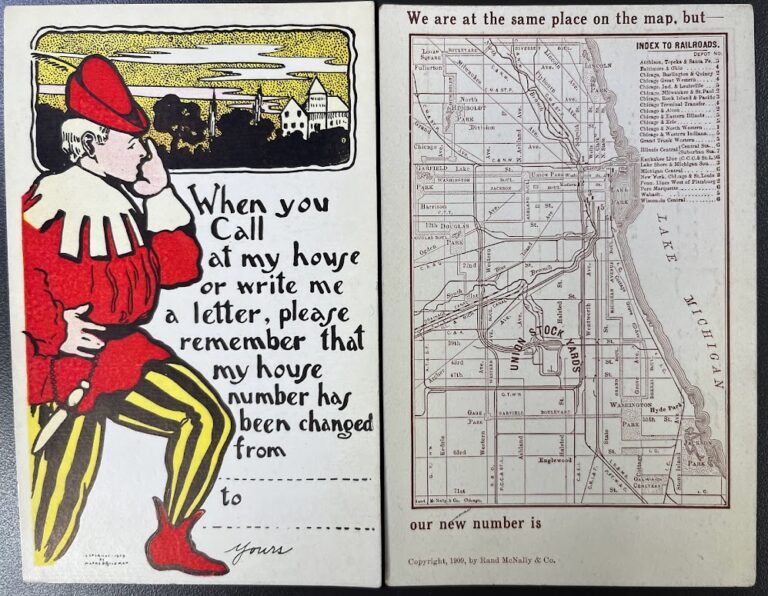
Two examples of commercially produced postcards for Chicago residents to explain their new addresses to friends, family, and business associates following the standardization of street numbering, c. 1909. Gift of Donald Friedman (2003.0246.1-31). Photograph by Ellen Keith
Do you think you have a home built from a kit? You may want to look at our catalogs of “prefabricated homes.” We also have a book of floor plans of selected apartment buildings.
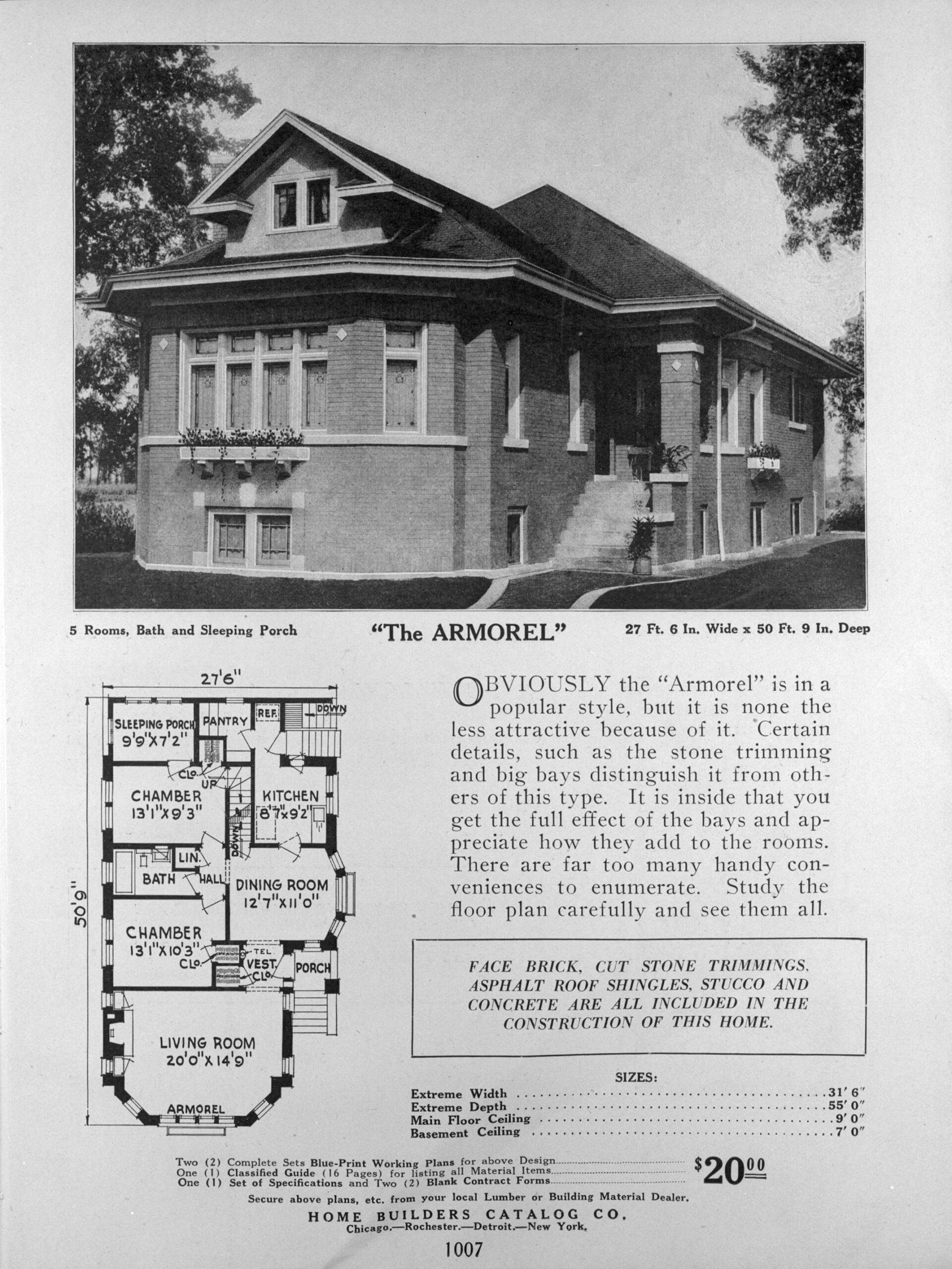
A picture, floor plan, and text describing a bungalow called “The Armorel,” Home Builders Catalog, 1926. TH455 .H6 OVERSIZE. CHM, ICHi-015886
There’s more we can do from searching newspaper databases for articles that reference your address to checking crisscross directories and blue books for former residents. We love assisting researchers with house history, so come see us to get started!
Additional Resources
- The Chicago Bungalow Association equips homeowners with energy efficiency programs and educational resources to maintain, preserve, and adapt their Chicago bungalows and vintage homes, thereby strengthening the neighborhoods they anchor.
- The Chicago Workers Cottage Initiative celebrates this housing style, seeking to preserve the unique features of these houses, protect them from demolition, and continue their use and reuse for the next century.
- Logan Square Preservation is a community organization dedicated to educating citizens about architecture, history, and beautification.